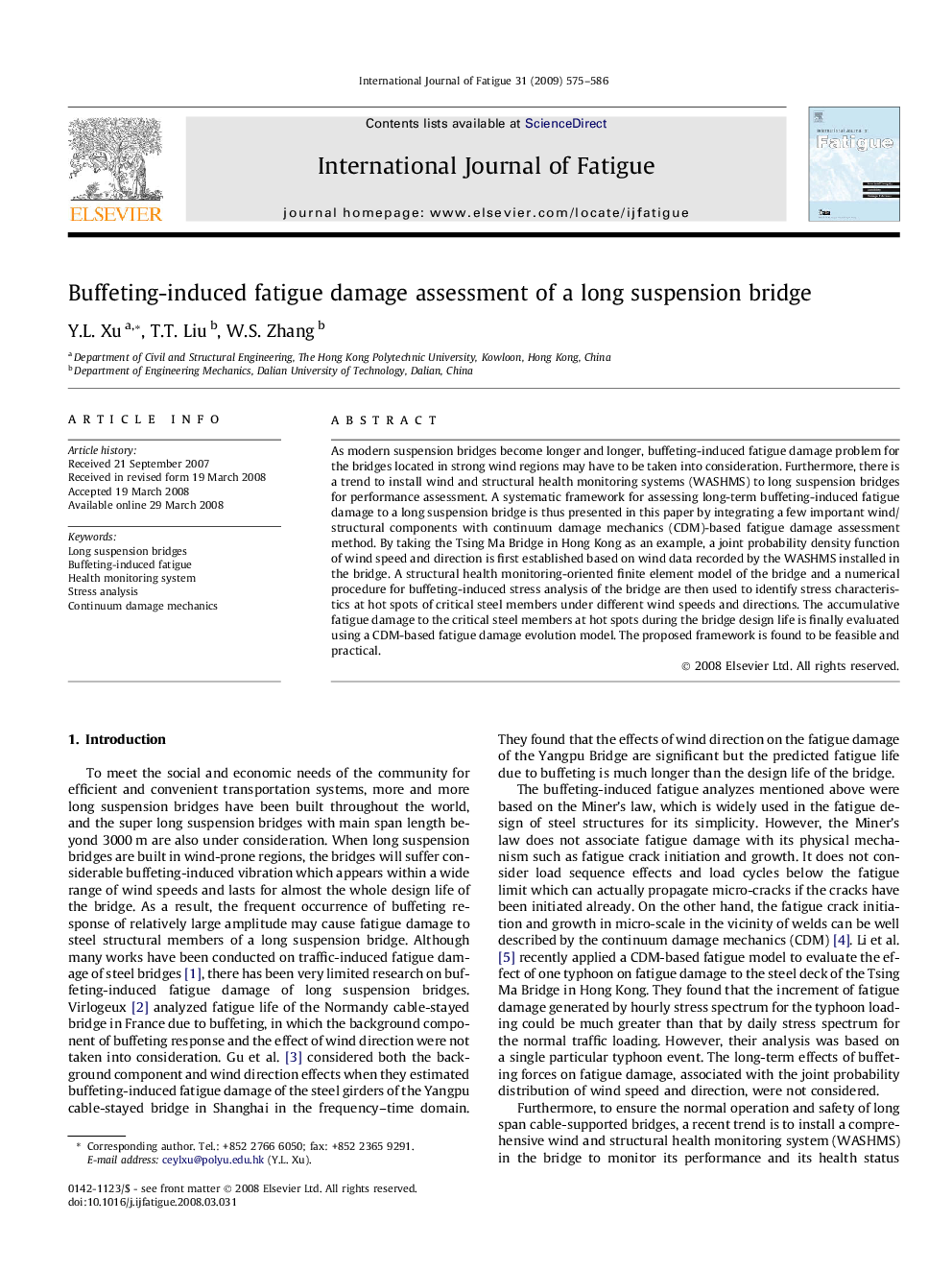| Article ID | Journal | Published Year | Pages | File Type |
|---|---|---|---|---|
| 778581 | International Journal of Fatigue | 2009 | 12 Pages |
As modern suspension bridges become longer and longer, buffeting-induced fatigue damage problem for the bridges located in strong wind regions may have to be taken into consideration. Furthermore, there is a trend to install wind and structural health monitoring systems (WASHMS) to long suspension bridges for performance assessment. A systematic framework for assessing long-term buffeting-induced fatigue damage to a long suspension bridge is thus presented in this paper by integrating a few important wind/structural components with continuum damage mechanics (CDM)-based fatigue damage assessment method. By taking the Tsing Ma Bridge in Hong Kong as an example, a joint probability density function of wind speed and direction is first established based on wind data recorded by the WASHMS installed in the bridge. A structural health monitoring-oriented finite element model of the bridge and a numerical procedure for buffeting-induced stress analysis of the bridge are then used to identify stress characteristics at hot spots of critical steel members under different wind speeds and directions. The accumulative fatigue damage to the critical steel members at hot spots during the bridge design life is finally evaluated using a CDM-based fatigue damage evolution model. The proposed framework is found to be feasible and practical.
